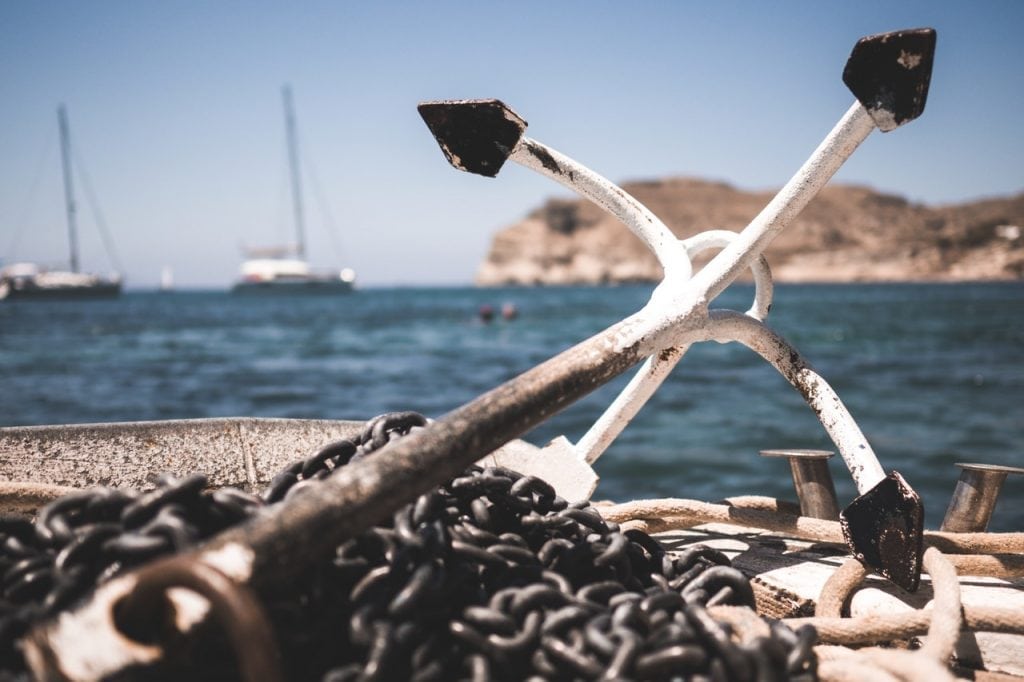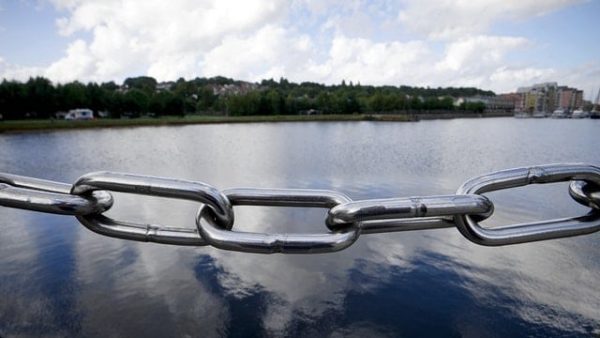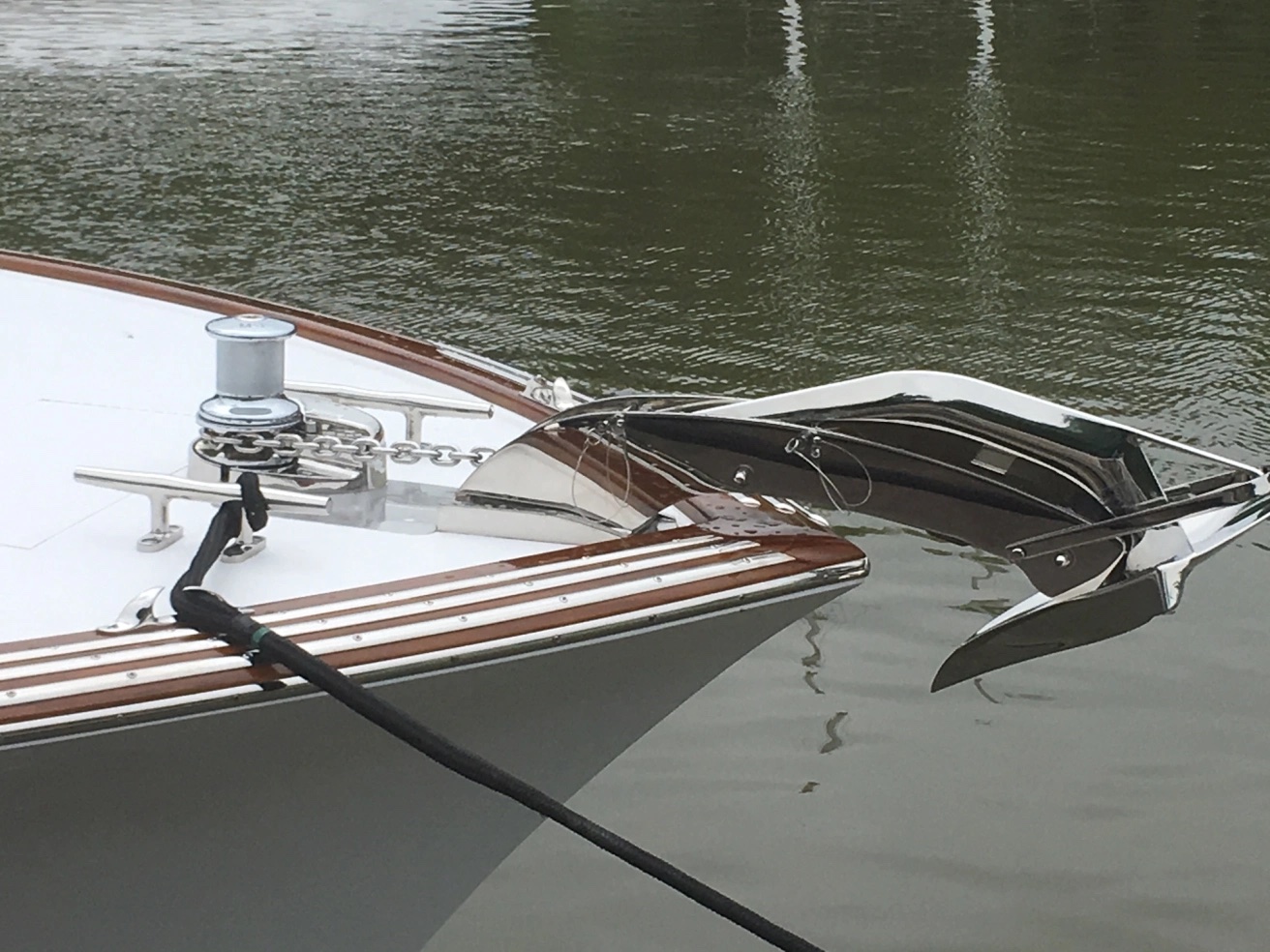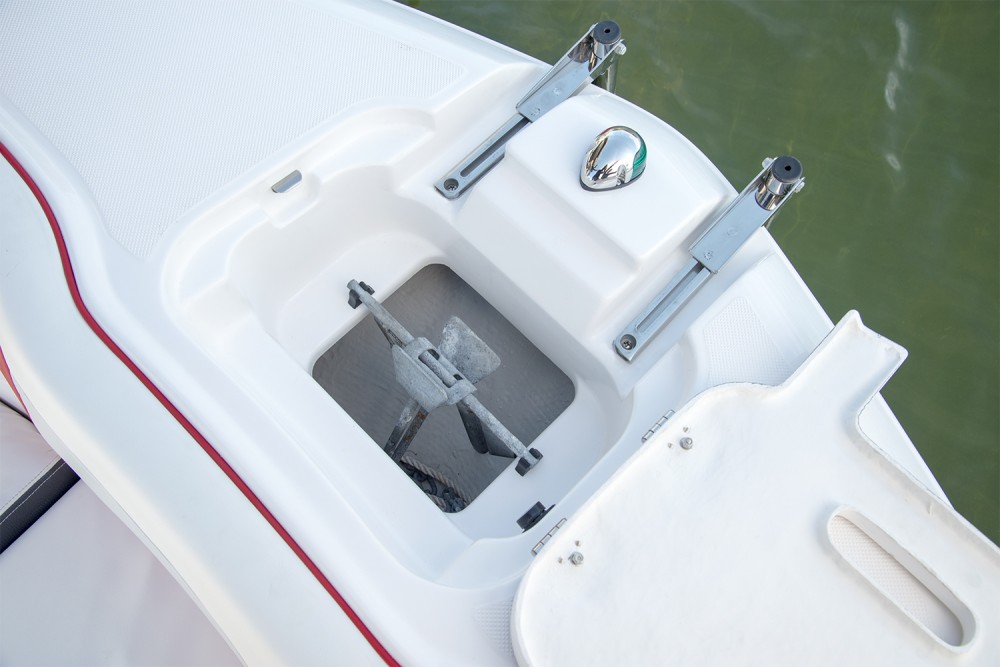Ground Tackle: Time to Refit?
As you prepare for the change in seasons, don’t forget to inspect a very important safety item—the ground tackle. “There are three safety things on board—a life jacket, fire extinguisher, and anchor,” says John Lynch, COO of Anchorlift in Cape Coral, FL. Lynch advises that when inspecting the anchor (particularly at the weld points) and chain, “Look to see if any of the galvanizations has been corrupted and if any rust has started to form in those areas where the galvanization has disappeared or rubbed off.”
The Skinny on Ground Tackle
Ground tackle that uses a combination of chain and rope can create rust where the rope is connected to the chain. This is because it rubs off the galvanization. Lynch suggests cutting the link attached to the splice end and to reconnect the rode using a D-connecting link. This would be the only time he recommends using a connecting link and suggests using a thread lock product, such as Loctite, on the screw pin.
Rust is the worst enemy and may initially be cosmetic. A thorough cleaning along with an anti-corrosion coating will provide protection but only temporarily. Use a galvanizing compound spray for galvanized anchors and chain. “Once corrosion starts, you can’t stop it,” says Lynch. The application of a coating doesn’t restore the anchor and chain, nor does the process return the ground tackle to its original strength. If the gear shows signs of pitting or flaking of the metal, or if the links appear thinner in width, then it’s time to replace it.
The Rode
When inspecting the anchor line, look for signs of abrasion, cuts, broken or frayed yarns, variations in strand size or shape, burns, dry rot, and even rust (on nylon). Look closely at splices. “A splice should be eight to ten inches back into itself,” says Lynch. He points out that the splice between rope and chain should be no larger than the link of the chain it’s attaching to. If it’s larger, it can easily jam in the windlass.
If necessary, Lynch recommends replacing the rode with either 8-strand nylon or double braid 8- to 24-plait polyester. “Three-strand nylon is inexpensive. But does not work well in a windlass because it’s slick, more so when wet,” explains Lynch. “Eight-strand nylon has better grip because of the weave, [and] double braid is smooth to the touch, holds up longer in a marine environment and gives terrific grip when going through a gypsy.”
The Windlass
“Windlasses are very forgiving, but they are abused endlessly. A little care pays dividends,” says Jonathan Neeves, published technical writer specializing in anchoring. If the rode or chain is slipping through the gypsy, “Check the clutch cones and make sure they are greased properly,” adds Lynch.
“Check the pressure fingers that provide the pressure put on the chain and rope so it grips going through the gypsy. Those are spring loaded, and sometimes the spring can wear out.” Check the motor and gearbox exterior to make sure no corrosion is forming, check the gearbox oil and check the electrical connections. If there’s corrosion, terminals are loose or wire jackets are compromised, follow Lynch’s directions. “Fix it, don’t patch it,” Lynch recommends. “Replace it.”
“A major issue is that many windlasses are commonly made from a cross-section of metals. The bolts are usually stainless with the castings aluminum,” says Neeves. He suggests checking the original installation, and subsequent servicing that the stainless bolts are isolated from the alloy with some form of protection, such as Duralac.
The Locker
A clean anchor and chain won’t last long if the anchor locker is a mess. “Unblock the drain hole,” says Neeves. “If the locker drain is above the locker base, make sure your chain does not sit in a puddle of water, or worse, mud. … Some muds are anaerobic and will be acidic which will corrode the galvanizing off the chain. Wash the locker out with fresh water as often as possible as it’s commonly full of salt. If sitting in the sun, the perfect condition for accelerated corrosion.”
The anchor system is an important safety feature. Care for ground tackle properly. Remember, it keeps you attached to the seabed floor while fishing, diving or weathering out a storm.



